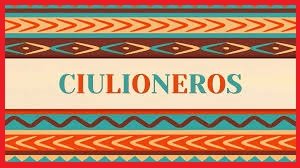Understanding the Essence of Ciulioneros
The term “Ciulioneros” is deeply rooted in cultural traditions, particularly in Lithuania. While often associated with the arts, music, and artistic revival, Ciulioneros symbolizes Lithuanian heritage and identity. This article will delve into the origins of Ciulioneros, its role in shaping Lithuanian culture, and how it continues to impact the modern world. We will explore its historical background, significant cultural elements, and prospects.
The Origins of Ciulioneros
Ciulioneros originated from the broader artistic and cultural movements in Lithuania. It is often linked to Mikalojus Konstantinas Čiurlionis, a Lithuanian painter, composer, and writer whose works deeply connect to Lithuanian nature, folklore, and national identity. The Lithuanian Art Revival movement is not solely an artistic phenomenon. Still, it encompasses a more profound cultural revival, with roots in Lithuanian mythology, folk traditions, and a desire to preserve the nation’s identity during periods of foreign rule.
In the early 20th century, Lithuania experienced several waves of cultural and national revival, especially when the country was under Russian and later Soviet occupation. Lithuanian artists, musicians, and writers sought to protect and revive their cultural heritage during these periods. Čiurlionis, as a central figure of this movement, inspired many others to celebrate their roots through art, music, and artistic expression. This was the birth of what we now call Ciulioneros.
The Cultural Significance of Ciulioneros
Ciulioneros is more than just an art movement. It embodies the struggle of the Lithuanian people to preserve their culture and traditions in the face of oppression. Lithuanian Art Revival has become a symbol of resistance and resilience through the arts, particularly painting and music. The movement allowed artists and musicians to express their national pride and reconnect with their heritage.
One of the primary aspects of Ciulioneros is its connection to Lithuanian folklore. Many artworks and musical compositions associated with the movement draw inspiration from ancient Lithuanian myths, songs, and legends. These elements serve as a reminder of the country’s rich history and spiritual connection to nature.
For instance, in Čiurlionis’ works, you can often see themes depicting Lithuania’s natural landscape—forests, rivers, and the iconic Baltic Sea. His paintings usually incorporate symbolic and mystical elements that reflect his deep understanding of Lithuanian folklore. This use of nature and symbolism has since become a defining feature of the Lithuanian Art Revival movement, continuing to inspire artists today.
The Influence of Ciulioneros on Modern Art and Culture
Over time, Lithuanian Art Revival influence has transcended Lithuania’s borders, impacting global art and cultural movements. Today, artists, musicians, and cultural practitioners worldwide draw inspiration from the movement’s core themes of national identity, nature, and folklore.
In modern Lithuania, Ciulioneros continues to be a source of inspiration for contemporary artists and musicians. Exhibitions dedicated to the works of Čiurlionis and other Lithuanian artists have gained international recognition, helping to place Lithuania on the global art map. Additionally, Lithuanian Art Revival has influenced Lithuanian festivals, theatrical performances, and even fashion design. Lithuanian fashion designers often incorporate elements of traditional folk art into modern clothing, blending the old with the new, which reflects the ever-evolving nature of Lithuanian Art Revival.
Modern interpretations of Lithuanian Art Revival are seen in various forms of media, including film, literature, and digital art. Lithuanian filmmakers, for example, often incorporate themes of nature, national pride, and mythology, critical elements of the Lithuanian Art Revival movement, into their work. This allows them to maintain a connection with their cultural roots while presenting these themes in innovative and contemporary ways.
The Role of Ciulioneros in Shaping National Identity
At its core, Ciulioneros is deeply intertwined with Lithuanian national identity. During times of political unrest, particularly under Soviet occupation, the movement served as a way for Lithuanians to assert their cultural independence and express their national pride. Even today, Lithuanian Art Revival plays an essential role in shaping how Lithuanians view themselves and their place in the world.
For many Lithuanians, Ciulioneros represents the unbreakable connection between their national identity and cultural heritage. Lithuanians have found a way to preserve their history while looking toward the future through art, music, and artistic expression. The movement has inspired generations of Lithuanians to take pride in their unique traditions and continue expressing their national identity creatively.
In addition to its influence in Lithuania, Lithuanian Art Revival has had a broader impact on the Baltic region. Artists and cultural practitioners from neighboring countries have drawn inspiration from the movement, leading to similar cultural revivals throughout the region. This has helped to strengthen the sense of regional identity and promote greater cultural exchange among Baltic nations.
The Future of Ciulioneros: Preserving Tradition in a Modern World
As we look toward the future, it is clear that Lithuanian Art Revival will continue to evolve and adapt to the changing cultural landscape. While the movement remains rooted in tradition, it has also proven highly adaptable, allowing artists and cultural practitioners to experiment with new forms of expression.
One of the critical challenges facing Ciulioneros in the future is preserving the movement’s core values while embracing modern technologies and art forms. With the rise of digital media and the increasing globalization of art and culture, the movement must remain relevant in an ever-changing world. This may involve finding new ways to integrate traditional themes with contemporary mediums, such as virtual reality, digital art, and multimedia installations.
At the same time, it is essential to ensure that the movement’s core values—national identity, folklore, and a deep connection to nature—remain at the forefront of its evolution. By exploring these themes innovatively,Lithuanian Art Revival can maintain its relevance while staying true to its roots.
Final Thoughts
The Ciulioneros movement is a testament to the power of culture, art, and national identity. From its roots in the early 20th century to its ongoing influence on modern art and culture, Lithuanian Art Revival has played an essential role in shaping how Lithuanians see themselves and their place in the world. As the movement continues to evolve, it will remain a vital part of Lithuania’s cultural heritage and a source of inspiration for future generations.
Questions and Answers:
- What is the significance of Ciulioneros?
- Ciulioneros is significant because it represents a cultural movement rooted in Lithuanian national identity, folklore, and nature. It is deeply tied to the works of Mikalojus Konstantinas Čiurlionis, who played a crucial role in shaping Lithuanian art and music.
- How has Ciulioneros influenced modern art?
- Ciulioneros has influenced modern art by inspiring contemporary artists to incorporate traditional Lithuanian themes, such as nature and folklore, into their work. It has also gained international recognition through exhibitions and festivals.
- What challenges does Ciulioneros face in the future?
- One of the main challenges facing Ciulioneros is preserving its traditional values while embracing modern technologies and new forms of artistic expression, such as digital art and multimedia.
- Can Ciulioneros be found outside of Lithuania?
- Ciulioneros’s influence has spread beyond Lithuania, particularly in the Baltic region. Artists and cultural practitioners from neighboring countries have drawn inspiration from the movement, contributing to a broader cultural revival.


